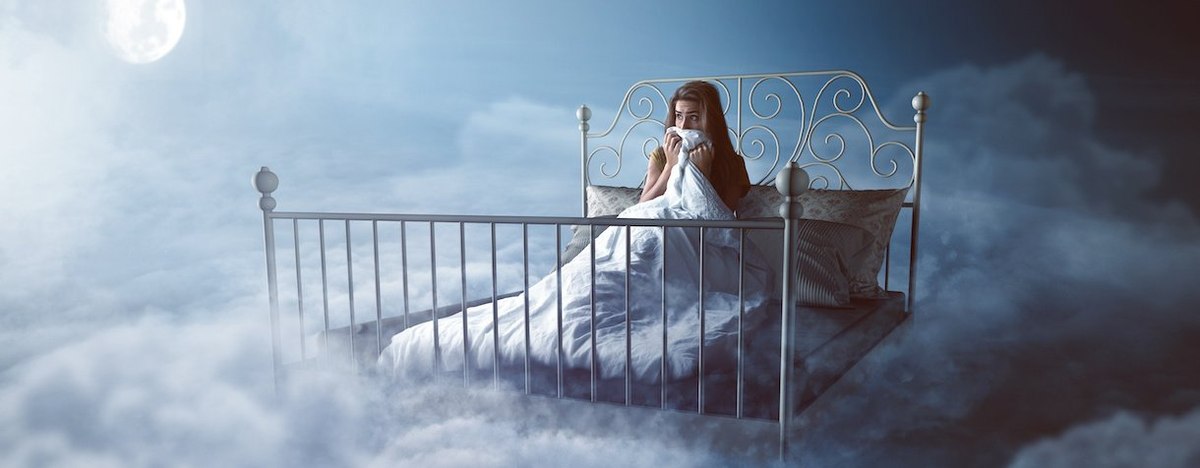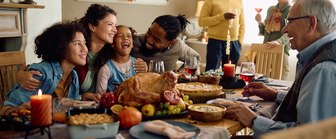You walk into class and sit down at a desk. An instructor at the front of the room announces that the final exam will be given today and begins to pass around the test. Panic quickly sets in. Somehow, you had no idea the exam was today, and have done absolutely nothing to prepare. As you frantically look around the room for a way out, you hear the faint sound of an alarm clock, getting louder and louder. You come to, relieved at the realization that it was all just a dream.
Despite vast differences in the day-to-day lives of people across the United States, there are remarkable resemblances in the scenarios Americans find themselves in after falling asleep. A recent YouGov poll explores thematic similarities in the types of dreams Americans say they have, as well as other peculiarities related to the dreaming experience. While there is some variation in the types of dreams remembered by Americans of different genders, ages, and educational levels, the similarities between these groups still outnumber the differences.
While few people say they regularly remember their dreams, most people are able to recall their dreams in at least some instances: 25% of Americans say they usually or always remember their dreams, while 44% say they sometimes remember them, and 29% say they rarely or never remember them. Nightmares make up only a small portion of the dreams Americans say they remember: Only 18% of people say that the dreams they remember are usually or always nightmares, while 31% say they sometimes are and 42% say they rarely or never are.
What Americans dream about
To identify the types of dreams that Americans have on a recurring basis, we first conducted a poll asking people to describe in their own words dreams they've had repeatedly throughout their lives. Responses to this question informed the design of a second, more-exhaustive poll, the results of which are published in this article. In the second poll, we asked Americans whether they'd experienced, either once or multiple times, a random selection subset of 15 dreams from among 27 types of dreams.
Which specific types of dreams do Americans remember having? Out of 27 types of dreams asked about, the one that the largest share of people (67%) say they've had is being chased by someone or something; 43% say they've had this dream more than once and 24% just once. While being chased in a dream likely counts as a nightmare for most people, the content of many of the other most common dreams on our list is not as clearly negative, including a house a person has lived in or been to (62% have dreamed about this at least once), former relationships (62%), memories from childhood (60%), deceased family members (60%), or sexual experiences (57%).
Dreams on our list that the fewest share of people report having, on the other hand, are ones that most people likely would classify as nightmares, including dreams about a house or building collapsing (18%), military service or war (22%), being naked in public (23%), your teeth falling out (27%), or suffocating or drowning (29%).
Dreaming experiences across demographic groups
We find some differences in the types of dreams remembered by various demographic groups, including by gender, age, and education:
Gender: Women are more likely than men to recall having dreams about death and trauma; this includes a loved one dying, trying to scream but being unable to, and traumatic life events. Dreams about sexual experiences and public nudity are more common among men than among women. Men are also more likely than women to say they've had dreams about military service or war.
Age: To understand how age affects the types of dreams Americans remember having, we examine differences between two groups: people under 45 and people 45 and older. Dreams that may be perceived as "stress dreams" — including ones about being attacked, showing up unprepared for an exam, or having your teeth fall out — are more common among people in the younger age group than among people in the older age group. Americans 45 and older are more likely to recall dreams about deceased family members or work experiences.
Education: While people who have graduated from college are generally more likely than those who haven't to say they've ever experienced each of the 27 types of dreams asked about, there are some gaps in the dreaming experiences of these two groups that are bigger than others. College graduates are far more likely than people without college experience to say they've had dreams about school or work. They're also more likely to recall dreaming about being late or forgetting something, as well as forgetting about a school exam.
Other dreaming experiences
Results from other dream-related questions included in the poll:
- 38% of Americans say they've had a dream that accurately predicted something that occurred later in their life.
- 33% of Americans say they've had deja vu that they thought was the result of a dream they'd had.
- 30% of Americans say they've had a dream in which they had deep knowledge of a subject they don't normally know anything about.
- 26% of Americans say they've written down or documented their dreams in some way.
- 23% of Americans say they've made a life decision that was influenced by something they experienced in a dream.
- 22% of Americans say they've died in one of their dreams.
- 14% of Americans say they've talked to a therapist or other mental health professional about their dreams.
Experiences with sleep paralysis
One in three Americans (33%) say they have experienced sleep paralysis, in which they are unable to move or speak just after falling asleep or waking up. Symptoms that are each reported by at least one in four people who have had sleep paralysis are:
- Inability to move (70% of Americans who say they have experienced sleep paralysis say they've experienced this)
- Inability to speak (58%)
- Feelings of fear, panic, or dread (52%)
- Feeling an intruding presence (33%)
- Pressure on the chest or difficulty breathing (29%)
- Seeing a dark figure in the room (26%)
— Carl Bialik and Linley Sanders contributed to this article.
Related:
See the results for this YouGov poll
Methodology: This poll was conducted on October 13 - 16, 2022, among 1,000 U.S. adult citizens. Respondents were selected from YouGov’s opt-in panel using sample matching. A random sample (stratified by gender, age, race, education, geographic region, and voter registration) was selected from the 2019 American Community Survey. The sample was weighted according to gender, age, race, education, 2020 election turnout and presidential vote, baseline party identification, and current voter registration status. Demographic weighting targets come from the 2019 American Community Survey. Baseline party identification is the respondent’s most recent answer given prior to March 15, 2022, and is weighted to the estimated distribution at that time (33% Democratic, 28% Republican). The margin of error for the overall sample is approximately 3%.
Image: Adobe Stock (lassedesignen)












